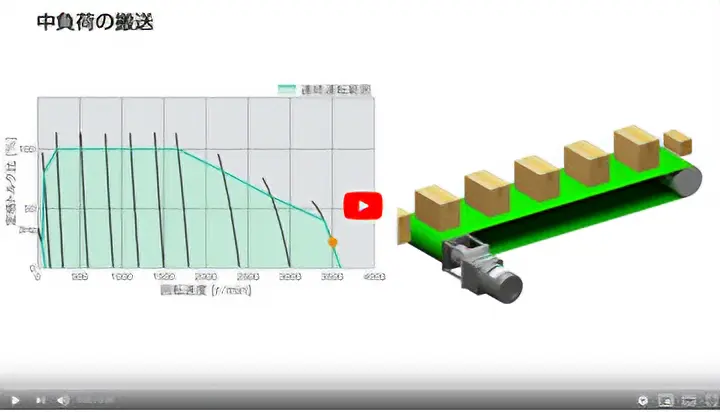Is There a Motor That Can Be Controlled by an Inverter?


-

Vex, what were you looking up on the website?
-

I'm looking for information about inverters. A customer inquired, "Do you have any motors that can be controlled by an inverter?" I remember seeing it somewhere on the website...
-

Then it’ll be in the FAQ.
-

Thank you, Ms. Ori! Let's see... No. 234 "Can a single-phase motor be driven by an inverter?" Three-phase motors can be controlled by inverters, but not single-phase motors?
-

That’s right. We receive this question a lot, so you should be sure to remember it.
-

Got it! Our answer to the customer will be, "Inverter control is possible for three-phase motors." But is there any other information we should provide? Such as wiring methods, for example. There are many types of inverters, aren't there?
-

That's a good point. But wiring a three-phase motor isn't that difficult. Just connect the 3 lead wires to the secondary side (output side) of the inverter. It doesn't matter where you connect.

-

That's easy! Then I will let them know about the wiring just in case when I answer.
-

Vex, I think the wiring is fine, but there's something else I'd really like you to tell the customers who use inverters.
-

What is it?
-

Characteristics data when combined with a typical inverter. Do you know about the Combine and Connect With Other Manufacturer’s Products section on the website?
-

Yes. I often look at it when explaining the setup with PLCs and touch screens. I didn’t notice the inverter.
-

We're releasing the data on the combined characteristics of Oriental Motor's KIIS Series and inverters made by Mitsubishi Electric, Fuji Electric, and Yaskawa Electric. Do you know why I want you to share this data with our customers?
-

Hmmm... Why is that?
-

The characteristics of the motor depend on the combination of inverter and the parameter settings. So that means?
-

It's difficult for customers to know the exact characteristics of a motor before they buy it. So that's why we also publish Combination Data and Parameter Setting Examples.
-

That’s right. I think customers would be worried if they didn't know the characteristics of the motor. So please explain it to them.
-

Um... Ms. Ori. The rotation speed - torque characteristics diagram for this combination data is different from the characteristic diagram we are used to seeing for AC motors.
-

That's right, let's go over it together. See Figure 1. First, the horizontal axis is the rotation speed of the motor, in r/min units. And the vertical axis is the rated torque ratio at 60 Hz.
Figure 1. Operable Area 
-

So it's a ratio. This means that the actual torque is determined by checking the rated torque of the motor to be used at 60 Hz.
-

That’s right. The speed of three-phase motors can be adjusted depending on the frequency, but they can't be used at any speed up to 100 %.
-

It's true that the ratio drops when the frequency exceeds 60 Hz.
-

That is why we indicate "drivable range area" as an area which it can be used without any trouble. It’s the red area in Figure 1. It's an area where you can run the motor continuously.
-

I see. This means that the red line in Figure 2 is the upper limit for each rotation speed, right?
-

That's right! The "maximum operable torque" is the maximum value that can be produced by the combination of the motor and inverter.
Figure 2. Maximum Operable Torque 
-

So the speed and torque you want to use should be within this range! Also, what exactly are those red vertical lines in Figure 3?
Figure 3. Characteristics Curve by Drive Frequency 
-

This shows the characteristics of the different drive frequencies.
-

...What does that mean?
-

I'll use 120 Hz as an example to explain. Look at Figure 4. Do you see that when the torque ratio is 0 % (no load), the motor rotation speed is about 3600 r/min, but at about 45 %, it drops to almost 3400 r/min?
Figure 4. 120 Hz Characteristics Curve 
-

I see. It's a big fluctuation compared to other characteristics curves. Even with the same torque, the speed is stable at 20 Hz because the line is straight, but if you use it at 120 Hz, the speed will change, so you have to be careful.
-

-

I’ve got it now! So the characteristics change depending on the usage conditions and frequency. We'll show you that three-phase 200 VAC motors can be controlled by inverters, and we'll give you a good overview of their characteristics!
-

Please do!
